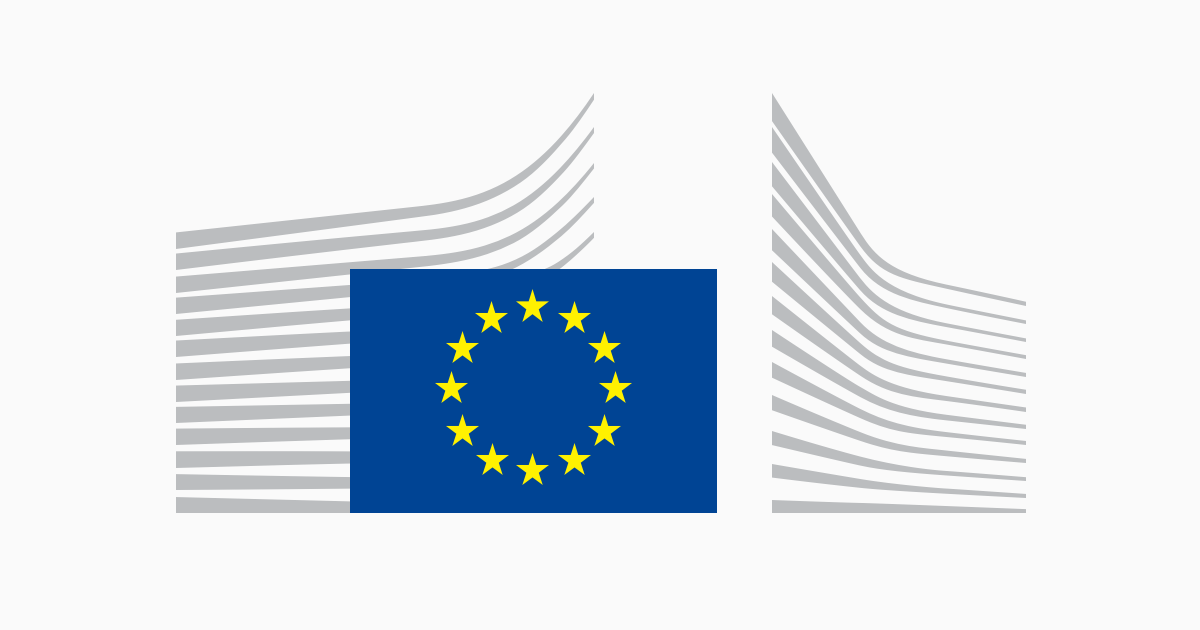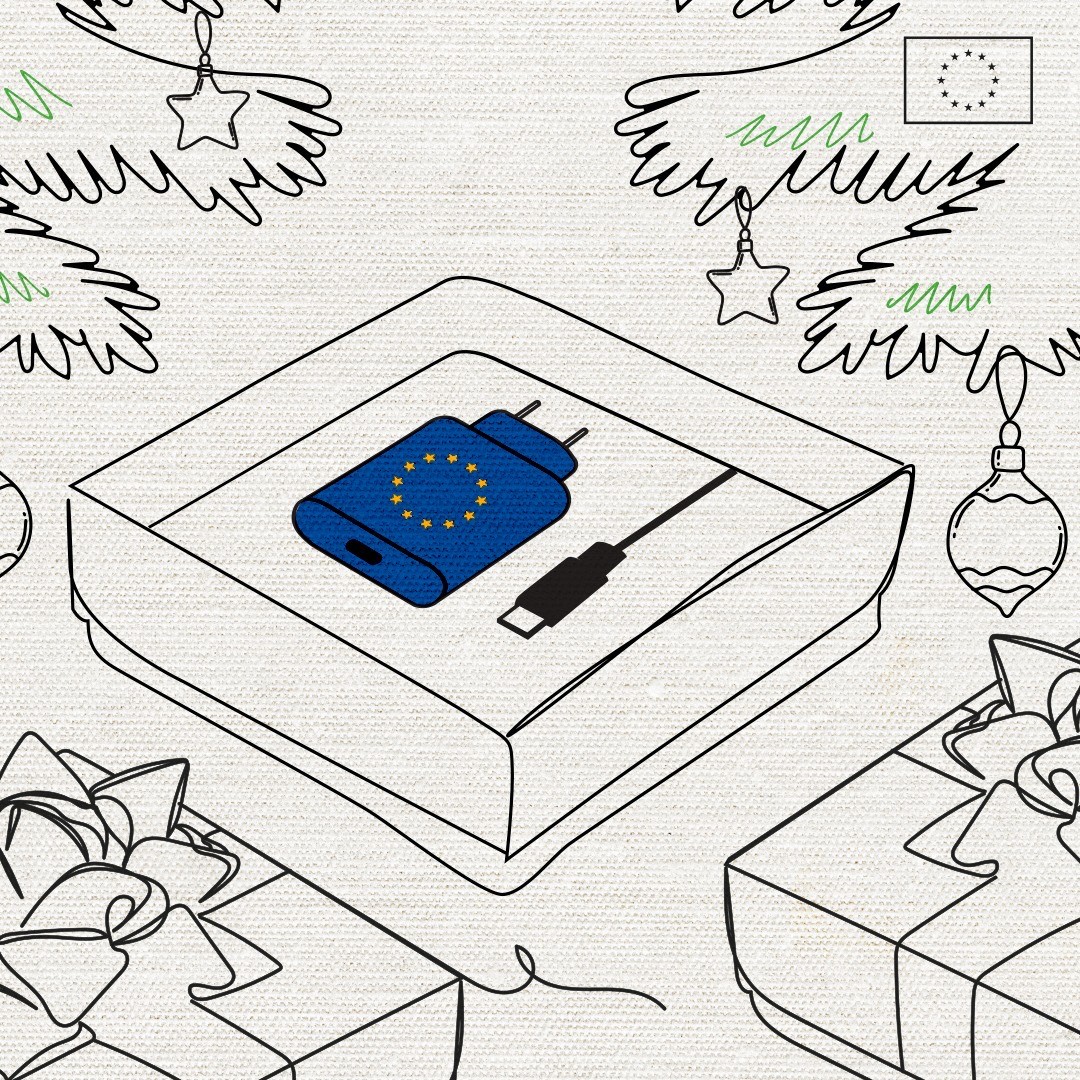cross-posted from: https://jlai.lu/post/3226934
The wait is finally over. From 2024, USB-C will be the common standard for electronic devices in the EU – and we have already seen the impact !
It means
- 🔌The same charger for all phones, tablets and cameras
- ⚡ Harmonised fast-charging technology
- 🔄Reduced e-waste
One charger to rule them all.
Now, a reality.
Learn more about the #EUCommonCharger here: https://europa.eu/!hwjj3G
Unbundling the sale of a charger from the sale of the electronic device .
The ‘common charging’ requirements will apply to all handheld mobile phones, tablets, digital cameras, headphones, headsets, portable speakers, handheld videogame consoles, e-readers, earbuds, keyboards, mice, and portable navigation systems as of 2024. These requirements will also apply to laptops as of 2026. Such transition periods will give industry sufficient time to adapt before the entry into application.
Consumers will be able to purchase a new electronic device without a new charger. This will limit the number of chargers on the market or left unused. Reducing production and disposal of new chargers is estimated to reduce the amount of electronic waste by 980 tonnes yearly
Producers will need to provide relevant visual and written information about charging characteristics, including information on the power the device requires and whether it supports fast charging. This will help consumers understand if their existing chargers meet their new device’s requirements and/or help them select a compatible charger. Combined with the other measures, this will help consumers to limit the number of new chargers purchased and save at least €250 million a year on unnecessary charger purchases.
L’attente est finalement terminée. À partir de 2024, l’USB-C deviendra la norme commune pour les appareils électroniques dans l’UE – et nous avons déjà vu son impact !
Cela signifie
- 🔌Le même chargeur pour tous les téléphones, tablettes et appareils photo
- ⚡ Technologie de charge rapide harmonisée
- 🔄Réduction des déchets électroniques
Un chargeur pour les gouverner tous. Maintenant, une réalité. Pour en savoir plus sur le #EUCommonCharger, cliquez ici : https://europa.eu/!hwjj3G
Les exigences de « charge commune » s’appliqueront à tous les téléphones mobiles portables, tablettes, appareils photo numériques, écouteurs, casques, haut-parleurs portables, consoles de jeux vidéo portables, liseuses électroniques, écouteurs, claviers, souris et systèmes de navigation portables à partir de 2024. Ces exigences s’appliquera également aux ordinateurs portables à partir de 2026. De telles périodes de transition donneront à l’industrie suffisamment de temps pour s’adapter avant l’entrée en application.
Les consommateurs pourront acheter un nouvel appareil électronique sans nouveau chargeur. Cela limitera le nombre de chargeurs sur le marché ou inutilisés. On estime que la réduction de la production et de l’élimination des nouveaux chargeurs permettrait de réduire la quantité de déchets électroniques de 980 tonnes par an.
Les producteurs devront fournir des informations visuelles et écrites pertinentes sur les caractéristiques de charge, y compris des informations sur la puissance requise par l’appareil et s’il prend en charge une charge rapide. Cela aidera les consommateurs à comprendre si leurs chargeurs existants répondent aux exigences de leur nouvel appareil et/ou les aidera à sélectionner un chargeur compatible. Combinée aux autres mesures, cette mesure aidera les consommateurs à limiter le nombre de nouveaux chargeurs achetés et à économiser au moins 250 millions d’euros par an sur les achats inutiles de chargeurs
I just wish there was a standard for marking the cables, so you could look at the cable and tell what it was capable of. All the cables and chargers look the same but have wildly different capabilities. 
Yeah i discovered that and i was extremely furious. I bought a usbc cable around 10€ and it wasn’t working because the device only supported a certain type of usbc. Apparently, there is some info about information in the eu website.
But i’m not able to understand any technical part…i just want a color : yellow charger/cable go with yellow port. Etc.
i’m not able to understand any technical part
I’ll break it down for you - it’s a long list but easy to understand:
- Some cables have four internal wires. Others have over a dozen wires.
- Some have thin wires, some have thick wires. The thick ones cost more and are less flexible - the main benefit is they can be longer while charging quickly.
- Some cables have the internal wires wrapped in plastic. Others have them wrapped in plastic then that’s wrapped in a metal shield, then that’s wrapped in another plastic layer. The latter is more reliable and not just for the cable itself (without shielding, the cable can interfere with other electronics that are near the cable - such as your computer or phone.
- Some are just ordinary cabling, and some have complex circuitry embedded in the cable to run advanced algorithms to remove noise from the cable - this is necessary to achieve high data rates at long cable lengths.
- Nearly all use copper cables. A few use fibre optic cables. This can handle even longer cable lengths
- Some cables are just like “whatever this will do”, and others are well designed and carefully manufactured/tested/etc.
.
i just want a color : yellow charger/cable go with yellow port. Etc.
There would need to be something like a fifty colors. The USB standards body is pushing cable manufacturers to use labels that show data rates (gigabits per second) and power capabilities (watts) on every cable. That will help a lot, but for all the other stuff (especially shielding and general quality…) you need to rely on either brand reputation or third party tests. Even then you need to be careful, because the best brands don’t put all those features in every cable (too expensive).
Also unfortunately at 10€ you get what you pay for. The better brands all charge more than that.
I have stuck labels on all my DP capable cables - it is very annoying not to get video output, and “does this cable even work for video” being one of the things you need to debug.
deleted by creator
Absolutely. I think it should have labels instead of colors tho. Because vendors can use different colors for same standards, which they’re doing right now.
For example random unique two-lettered labels printed on the one end of the cable. So we can Google “USB XX” and see what it is capable of and what not. Also vendors can simply say “this product is needed to be used with at least XX USB standard”.
The problem with colors is; there is no one metric for difference. For example two cables can have same data transfer speed while one can have PD and the other one don’t.
and the naming scheme doesn’t make it any better, “USB 3.2 Gen 3 with USB PD and/or CuickCharge” just doesn’t make sense to rationally thinking people.
how about “USB C-C up to X amount of mbytes and 100W charging”?
The charging side is complicated to mark accurately because it has to consider current and voltage. Like, a cable might be able to do 60W, but only at 2A@30V, 3A@20V would melt the cable.
And WiFi is going the opposite direction. From 802.1a/b/ax/whatever to WiFi 5, 6 etc.
(Although the MIMO chains can get a bit more complex, but still fairly simple compared to the USB bs)
We need something like resistor band labeling for chargers. Yellow for 1A, Green for 2A and another band for the charging standard such as PD QC3.0 and so on.
As it stands now we are going to need a station in stops to test cables.
Since everyone here seems so confused by USB naming schemes, a short primer:
USB 3.0, 3.1, 3.2, and USB4 are the major and minor revision number of the standard. You don’t have to worry about it if you are not implementing it yourself.
The Gen number indicates the supported transfer speed, Gen 1 is 5Gbps, Gen 2 is 10, Gen 3 is 20, regardless of the spec revision.
(USB 2.0 is 480mbps)
Dual lane (Gen ?x2) means you take the speed of the Gen number and multiply it by 2.
The only major difference between USB 3 and 4 is that USB4 uses Type C plug only, whereas USB 3 can use a variety of connectors.
All USB-PD compliant cables support up to 100w of power delivery, only cables labeled as EPR (extended power range) supports up to 240w of power.
Also, USB4 can optionally support PCIe tunneling, which is a fancy way of saying it supports plugging more advanced types of hardware in (like GPUs, high-speed network cards or NVMe SSDs) at speeds of up to 40Gbps.
And there is USB4 v2 (not kidding, that’s the name) which extends USB4 to up to 80Gbps, but there are no devices that support that yet.
To make it even more confusing, USB 4 and its subsequent versions are basically adapting more and more Thunderbolt features.
Isn’t there a change in how USB is represented now? They should now have the max speed and power on the cable/adapter
What the above user is saying is how it’s listed in specs and technical documents
What you are saying is how the USB IF recommends it be marketed. In theory, yours is the only one the average person should worry about these days
However in the real world it’s an absolute mess of OEMs advertising their ports as being one or the other naming schemes, or neither and just saying “USB”
Also to add to this, the USB-C connector is perfectly compatible with the actual USB data protocol all the way back to the original USB (1.0) in low speed mode (with its mind-dazzling 1.5Mb/s speed) - all the required pins are still there as are the bits of electrical signalling necessary in the original USB protocol.
It’s just that USB-C adds more data lines and other things used in the more modern versions of the USB protocols (including for the newer power protocol - USB-PD, though maintaining backwards compatibility with the old power provision which was controlled via the USB data protocol itself) as well as support for the connector being flippable (works whatever way you plug it in) which is done by basically having the original lines appear twice, one on each side of the connector.
Isn’t standard USB C cables only 3A (60W)? And 5A (100W) only if they identify themselves with a built in chip?
Hence, the “USB-PD compliant” portion, which partly is that tiny controller chip.
You can technically have USB-C to C cables that are not PD compliant, but these are not the cables you want to be buying.
I really like this. Being able to just buy bunch of newest generation Type-C and using it everywhere is awesome.
The best part is that you can help your friends. :3
Any news on if they are going after Nintendo for it’s non-standard implementation of usb-c?
Nintendo’s USB-C on the Switch is standard compliant, but modified in a way to allow for smooth plugging into their own docks, which requires a much tighter tolerance.
Cheap third party docks cannot meet the tolerance required for smooth plugging, and the dock that was tested was not even PD compliant but tried to implement the handshake for high power in software instead, which was what caused the bricking of the Switch.
Yeah I think they’ll definitely get in trouble for that. Nintendo’s official statement that “third party chargers will void your warranty” is pretty clearly a breach of the common charger rule.
And it’s not an empty claim either, some standards compliant third party chargers can actually damage a Nintendo Switch. Nintendo will have to fix that, or else their products might be banned across the EU.
So what is the standard fast charging solution they’ve choosen?
The site doesn’t say.
Are we going to see USB-PD in more phones now?
I’d love to see all the different manufacturers standards bugger off.
Ive seen USB C accessories work in one socket and not in another and it pisses me off way too much. If anyone can decide on what is the protocol the connector is hardly universal. Making sure a particular charger will be 100% compatible with your accessories involves long research into confusing acronyms and then it doesn’t work when you buy it.
There is a section of useful links on the page. 9 links in total. One of them is a factsheet on proposed common charger.
It’s probably the closest thing we have to the perfect port for every utility ever, even with its problems.
It sure seems like the EU has their shit together on more stuff than we do. We can only break shit that was already fixed because reasons. I know the EU is not perfect but they sure seem to get stuff right more often than not. At least Apple won’t go through the trouble of making two iPhones for no reason other than to just be an asshole.
The EU cares about consumer protection because most of the big companies in a position to fuck over customers are based in the US.
It’s why Americans don’t care about consumer protection. They believe exploitation is okay as long as it’s by another American.
I think Americans have bigger issues to deal with than chargers or net neutrality (e.g. playing world police, or starving children, abortion laws). Thankfully the EU can step up.
Who’s “we”?
America, I’m assuming
Yes I’m a yank.
I am a huge fan of USB-C and have been waiting for it to come to the US for years. I hope that it will be here soon and that more companies will adopt it.
What are you using that doesn’t have it? Samsung, Apple, Dell, HP now use it on all phones, Tablets, Laptops. Playstation uses them, Vapes as well. I am unsure what XBOX uses, but usually people use a dock so I haven’t looked at the plug.
Not asking as if there isn’t a device out there that doesn’t use it, but I don’t know of any devices I can think ofSmall appliance. For example, 6 months ago, I was looking for a new bike front light and finding one that charged by USB type C was difficult. I thought I might replace my rear light too, but all the simple, reasonably priced ones were micro USB, so I gave up.
Honestly I would hold off on purchases for USB-C models of devices that used to sell with micro USB now after getting various things which only work with the USB-A -> USB-C adapters. Seems like manufacturers did the bare minimum and just replaced the socket and plastic hole, without any other changes, so while yes it can charge via a USB-C port, it still requires the USB-A cable because it can’t do any negotiation on charging specs and was designed with the 5V assumption of USB-A power.
For myself, I’m always carrying around a Type A block, so it’s not an issue right now and probably won’t be an issue until the batteries die. I just want to carry around 1 less cable.
I bought a Logitech wireless mouse last year (and a high end, well-reviewed model, to be clear) and was absolutely astounded to see that it charges by microUSB.
My beard trimmer also wasn’t USB C but in fairness maybe that’s a “we designed this so you can charge it in a wet, steamy bathroom” kinda thing.
eBook readers took ages to finally transition for some reason (faaaaaaar after phones/tablets), but we’re now finally there.
Plenty of laptops still use their crappy barrel plugs
My head torch I bought a few weeks ago was microUSB
I went into Lidl and bought a AA/AAA battery recharger, that was microUSB too
Don’t get me wrong, most stuff is Type-C now, but microUSB and others still rear their ugly heads a fair bit, and it needs to stop.
I don’t understand what is wrong with microUSB in applications like charging a mouse? I don’t know what the effective difference really is in such cases. It’s not like USB-C means you can do everything with the same cable. That’s not how USB-C works. So either way, you’ll probably need multiple cables depending on the devices you’re using.
But in your example, they are equivalent. USB-c can do everything micro-usb can, so moving the mouse to usb-c is beneficial to the customer by reducing the number of different cables and connectors to deal with. I suppose usb-c is a little bigger but not enough to make a difference on a mouse
But it also requires redesigning everything and recalling all the stock that is already out there if you want everything to be USB-C, which I think is a little silly when talking about a mouse.
So yes, USB-C can do all of those things, but to move to it also requires redesigning the product, recalling or selling out of the old product, and possibly raising the price to cover it.
USB-C makes sense to me in a lot of applications, but I just don’t think it matters much when it comes to something like a mouse at this point. Five years from now if there’s a rechargeable mouse that isn’t USB-C? Fine. I agree with you. It should be. In 2023/2024? I think it’s acceptable.
Nobody is talking about recalling old products to swap out USB ports and redesigning for USB-C is trivial. They mean for future purchases, it’s nice to use a single standard.
I understand that, but until the old stocks run out, the future options with USB-C ports aren’t going to show up for purchase. Logitech isn’t going to make and sell mouse model X with a USB-C port until they run out of all of what they already have. And that goes right the way both up and down the supply chain.
I guess I kind of assumed we already are five years from now. Everything I see online has been complaining about iPhone being the last device to move to usb-c and it has been going on for years. I expected everything else to be already there or well on its way. If you redesign a mouse about every five years, there ought to have been enough time already.
Is a mouse really redesigned every five years? I’ve used the same make of Logitech wireless trackball for I don’t know how long now.
You can get USB micro to USB-C adaptors for about 1 to $2 each. That lets you use a single cable to charge both types of devices, which is the best of both worlds.
Huh? It’s been here for years. It’s great
This is great news, the only thing I’m wondering is what happens when USB-C becomes obsolete… or if it will ever be improved upon now that there’s a huge legal hurdle.
They’ll switch it again. They changed to USB-C from MicroUSB, no reason why the standard could not be updated as necessary.
Right but MicroUSB was not enshrined into law as a standard like this.
Tbh I’m conflicted because on one hand it’s great to have a common standard, but on the other this might very well impede progress. Also does USBC even provide enough wattage to power a gaming laptop?
Right but MicroUSB was not enshrined into law as a standard like this.
Which doesn’t mean that it can’t / won’t be changed. It’s in the EU’s best interest to update the law should the industry push for a new standard, so they will. Of course USB-C can and will be updated to handle newer protocol & charging specs over time, so it’ll be a long time before that’ll be necessary.
but on the other this might very well impede progress
I really don’t see how it realistically could. Look at the history of mobile phones so far. Almost the entire industry standardized around USB on their own rather early, and deviations from this (e.g. Apple) only very briefly provided an actual consumer benefit before they became horrible nuisances and cash grabs. The industry has and will continue to develop improvements to the USB spec, and now thanks to this law no-one is allowed to deviate from the common standard anymore. It’s a win for everyone except companies that want to cash grab on proprietary bullshit.
Also does USBC even provide enough wattage to power a gaming laptop?
It supplies up to 240 watts with USB-PD. The standard just says they need to be chargeable via USB C though — it doesn’t forbid additional charging connectors (like Apple’s magsafe or the barrel jacks found often on gaming laptops).
Good point with that last bit, I have a gaming laptop that comes with a big DC Barrel plug and power brick, which is essentially needed for playing games. However, it also lets you charge with USB-C which is what I use when travelling/doing productive work. I see no reason why this approach can’t be applied more regularly, as it increases flexibility and maintains compatibility with the standard.
USB-PD is something that continues to evolve over time, so if usb-c doesn’t power a gaming laptop right now, they’ll make it work down the road
I think wireless will eventually take over.
My biggest concern is really powerful laptops. Mine sometimes uses 250 watts when doing heavy photogrammetry, which is higher than even the new PD standard for USB-C.
I’m not sure that wireless will. Induction charging a laptop at 250W seems like it could conceivably turn your laptop into a nice cooktop.
My biggest concern is really powerful laptops. Mine sometimes uses 250 watts when doing heavy photogrammetry, which is higher than even the new PD standard for USB-C.
At the same time, there’s a few years until then, and USB-PD is an actively evolving standard. It doesn’t seem implausible for the consortium to extend the standard for high power charging at some point in the next 2+ years, seeing as it was 100W not that long ago.
Oh, I don’t see wireless doing 300 watt performance laptops, no.
I’m sure they’ll push the standard as much as possible, but when it comes down to it the connectors can only handle so much current, and unless they make exceptions for exceptionally powerful devices, we’re going to have to start plugging in 2 power wires as performance laptops become increasingly power-hungry.
Edit: I’m wrong. The law specifically exempts devices requiring more than 100 watts, and also didn’t require that PD be the only way to charge.
And my performance laptop will run off PD just fine when I’m just doing email or Excel, so I do use a PD docking station pretty often.
I responded to someone else, but I have a gaming laptop that needs the DC Barrel plug for playing games, but also lets you charge it with USB-C (useful for traveling). That would meet the standard set forth, as it is compatible with USB-C charging.
Now it’s time to make batteries user replaceable ;)
Brussels effect at work!
reduced e-waste
Well I wish the products would be bloody cheaper as well when there’s no charger in the package, but no…
Thank you EU!!
Wonder when they plan on changing from USB-a to USB-c on airplanes too
Damn, how long does it take to charge a whole airplane over USB?
No wonder air travel is so expensive!
As long as your phone doesn’t come with an airplane as its charger I don’t think that is covered by this. But airplanes are refitted on a regular basis, so maybe they will change all the ports within the next decade…
In terms of water proofing, how well does the usb-C port hold up? Water damage is one of the main causes of death for mobile phones. I wanted to see better water proofing overall and wonder if this would be a setback in that regard.
Don’t get me wrong, I’m very thrilled to have USB c as the standard.
I know waterproof Type C ports exist as electrical components. So the test is up to the manufacturer to correctly implement it.
Ultimately, Type C is no worse an option to other ports.
Probably just fine since every phone comes with a lightning or USB C port already and all have their IP65 ratings
I have Honor Magic 5 Pro, and it is rated IP68. Dudes even submerged it on the launch event. I only had it in use once while it was raining and it’s okay for now.
I mean, I would hope literally any phone on the market could survive rain.
You’d be surprised
USB-C can be rated all the way up to IP68, but most manufacturers only go for IP66, because IP67 and IP68 require a lot of additional testing and QA. Even if the port is technically capable of being rated at IP67 or IP 68, the manufacturer will only rate it on the packaging as IP66, so they don’t have to do the additional testing to get the IP68 stamp.
My pixel phone had a wave of salt water from the ocean get into the USB-C port. The phone detected the moisture and disabled the port until it was clean and dry. The port still works.
My last pixel died on a river float when water got into the storage area where my phone was. I don’t know how the water got inside the phones internals but I suspect the charging port could have been the weak point.




















